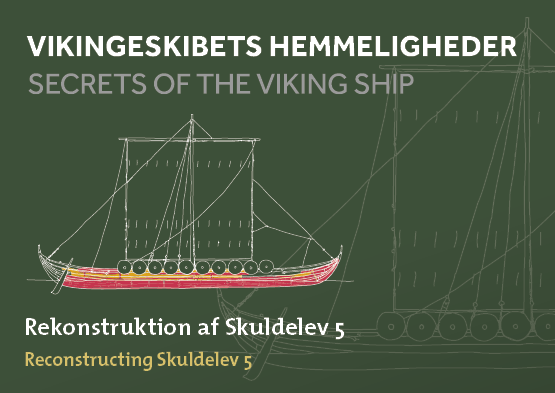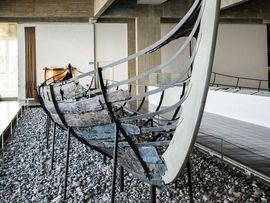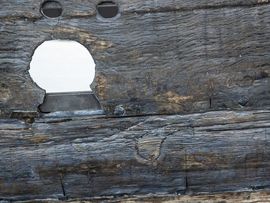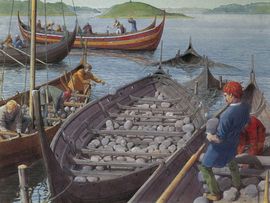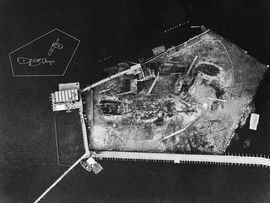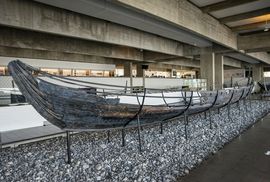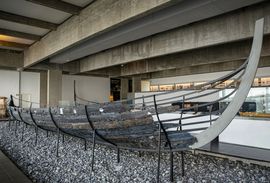A 1,000 years ago a warship was built in Denmark
It happens around the year 1030, when what we now refer to as the Viking Age is entering its final phase. The time of the great raids, when pagan seafarers from the North ravaged the coasts of Northwestern Europe, has long since developed into something much more complex. With their advanced maritime technology, Scandinavians have staked their claim to a place on the European political scene. The events that started with violent raids have turned into outright conquests, organised settlements and war fleets, but also into more peaceable trade networks, emporia and Christian kingdoms.
Their ships have made it all possible
In fact, ships are so closely connected to our understanding of the Viking Age that they have almost become a symbol of the period. And thanks to the last few years of focus on the Vikings in films and TV series, more and more people have become acquainted with the importance of Viking ships.
A ship is not just a ship
During the Viking Age, several different ship types were developed for specific purposes. Large, powerful knarr – cargo ships – for trade voyages on the high seas. Small, manoeuvrable fishing boats for use on fjords, rivers and inland waterways and, not least, the famous and feared warships. Long, narrow, swift ships, equipped with many oars and a single square-sail, and designed for the efficient transportation of warriors.
And it is this kind of ship that was built here in Denmark, around the year 1030. However, this particular ship's hull contains some details that are quite unusual and make the ship something of an exception to the rule in terms of the other Viking Age warships. This ship was built from the outset with a mix of new and reused timber. Planks were taken from another ship and adjusted so that they could be used again in the new ship. One of these planks bears carved decoration in Ringerike style - the only decoration of this kind we see surviving on Danish Viking ships. The hull also contains a wider range of wood species than you typically find in Danish ships of the period. It is built primarily of oak but also has pine and ash as part of the planking material and the quality of the material is generally lower than that seen on other 11th century warships.
The ship was in service for about 30 years, and many repairs were carried out along the way. But it was not to end its days by being 'chopped up and burned' like so many other old wooden ships. Instead, the ship was towed out to the water just off the coast of Skuldelev on Roskilde Fjord. Here, it was filled with stones and intentionally scuttled to form part of a barrier system on the fjord.
And it is here that the ship again sees daylight in 1962, after many centuries on the bottom of the fjord. Together with four other ships from the late Viking Age – those we today call the Skuldelev ships – our warship was excavated, raised, documented, conserved and reconstructed.
Today, all five ships are on display in the Viking Ship Hall here at the Museum and the warship has been given a new 'archaeological' name: Skuldelev 5. Scientific analyses have revealed the age of the ship, identified the different types of wood in the hull’s composition, and established that it was built in the area we now call Denmark.
Skuldelev 5 is still keeping some secrets
For why was it built in this way, with a mixture of new and old wood? What challenges did that choice create for Viking Age boat builders? What can the ship's construction tell us about how – and how much – the ship was used during its lifetime? And what does that say about the use of warships in the latter half of the 1000's?
To investigate these questions, the Museum's boatyard has embarked on an experimental archaeological project, with a full-scale reconstruction of Skuldelev 5. Work began in the summer of 2022 and construction is expected to span the next four years.
You can follow the construction process live at the Boatyard from May to October each year, and online via the Museum's social media channels.
Here, on the project website, you can read more about the ship-find Skuldelev 5 and over the coming months, the website will be updated with content about experimental archaeology, Viking Age boatbuilding and much more.
![[Translate to English:] Vikingeskibsmuseets bådeværft er i gang med et eksperimentalarkæologisk projekt - en fuldskala rekonstruktion af Skuldelev 5. Arbejdet begyndte i sommeren 2022. [Translate to English:] Vikingeskibsmuseets bådeværft er i gang med et eksperimentalarkæologisk projekt - en fuldskala rekonstruktion af Skuldelev 5. Arbejdet begyndte i sommeren 2022.](/frontend/Grafik/NYskuldelev5_logo_web_banner_555x134_555x393px_01.png)
![[Translate to English:] Kløvning af egestamme til Skuldelev 5 [Translate to English:] Kløvning af egestamme til Skuldelev 5](/frontend/_processed_/1/3/csm_2023_06_06_12_13_48_WK_3f82264310.jpg)
You can also get regular updates from the project on the Museum's Instagram profile:
» Visit us on Instagram...
See regular photo and film updates on Facebook:
» Visit us on Facebook...
Read about the Find
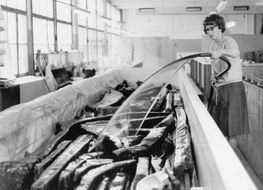
Skuldelev 5 is what we call a ship-find, because it was deliberately sunk to create a barrier out on the fjord.
We are we reconstructing?
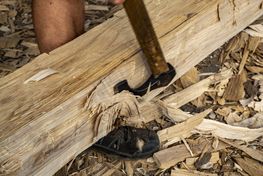
By reconstructing the Viking Ships, we gain insight into the craftsmanship and traditions of the Viking Age, and the original function and sailing abilities of the ships.
The build in pictures
![[Translate to English:] Skuldelev 5 - stævn [Translate to English:] Skuldelev 5 - stævn](/frontend/_processed_/d/2/csm_2023_06_20_14_26_01_WK_bf6c948f9e.jpg)
We continuously document the reconstruction of Skuldelev 5. You can follow the build in pictures in our gallery.
» Take a look..
